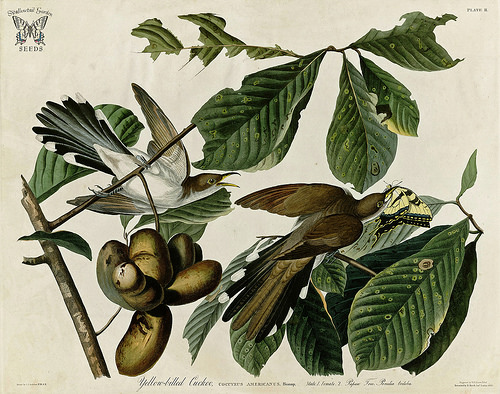
The pawpaw is the only temperate member of the tropical custard apple family not found in the tropics and it grows wild in 26 states in the U.S, from Louisiana to Ontario, Canada (I know – not a U.S. state) and from the Atlantic to as far west as Nebraska. It’s the largest edible fruit tree native to North America. They are quite hardy in snow and icy conditions and grow to about twelve feet with a slim tree trunk and branches with long, green leaves. The trees produce greenish/black fruit that ranges from three to six inches long.
So what’s all the fuss about? It’s got an amazing taste some describe as vanilla, banana, mango or even avocado. And… it gets better. It’s good for you too! It has high levels of vitamins, minerals and amino acids. It’s similar in fat content to an avocado.
And if you’re in the business of name calling – the pawpaw has been variously named a Hoosier banana, Indian banana, custard apple or a Quaker delight.
This fruit seems to have been nearly forgotten but was known in ages past, as Lewis and Clark mentioned their fondness of it in their journals and Thomas Jefferson grew pawpaws at Monticello. The pawpaw has a relatively short shelf life, which may have led to its fall from favor in the artificially long shelf life world we live in today. If you’re lucky you can find them at local farmers markets in the U.S. or just trek out into the woods and make a scavenger hunt out of it.
Pawpaw growers will plant the tree orchard-style in full sun, but in the wild it is found as an understory tree, often in very shady areas.
When you are ready to try one of these beauties (o.k. I’m kidding – the skin is sometimes dark and bruised), it’s best to pick the fruit straight from the tree. The uglier the better. A ripe pawpaw can look rotten and the fruit should be soft when you eat it. Just cut it in half, and scoop out the fruit. The bitter skin and seeds should be discarded. If you find an unripe pawpaw it can be stored just above freezing for 3-6 weeks.